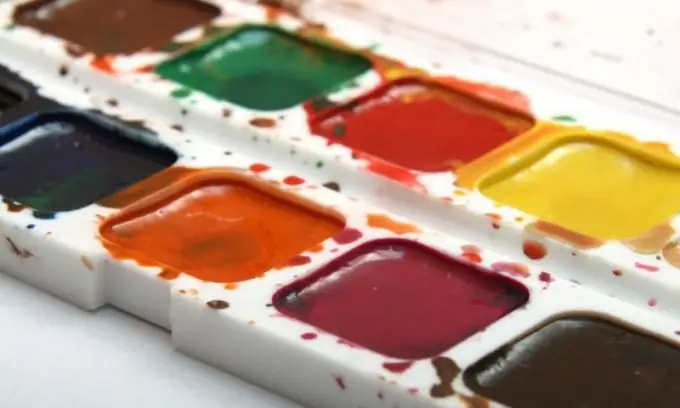Drawing helps to look at the world in a new way, distract, relax. That is why its popularity has increased so much today. One of the most readily available materials is watercolors. To get a beautiful drawing, it is important to choose the right tools and learn the basic techniques.

Features of watercolor: materials and rules
Watercolor is a great drawing material for beginners. Paints are inexpensive, and you can buy them and related materials in almost every stationery store. Therefore, many are familiar with watercolors since childhood: it is she who draws in art lessons.
If you want to learn how to paint beautifully, you need to choose the right toolkit. First, pay attention to the brushes. Use natural bristles (such as columns or squirrel) of different diameters and shapes.
Second, get a special watercolor paper. In terms of density, it resembles cardboard, but differs from the latter in texture, which allows the paint to "cling" to the base. Third, stock up on consumables: a plastic / glass palette, pieces of cloth, a container for water, paper tape, pencils for sketches. For unusual effects, prepare a toothbrush, porous sponge, white gouache.
Non-absorbent materials should be used as a palette: glass, plastic, ceramics. A special tablet is also useful. A sheet of paper dipped in water under a tap should be fixed on it.
When working with watercolors, artists recommend being very careful. This material practically does not allow for correcting and correcting a damaged drawing. Therefore, follow a simple rule: work with the light areas first, then with the dark ones.
You also need to be sure of the color you choose. Therefore, it will be correct to try the shade created on the palette on a spare sheet. If everything suits you, feel free to draw the selected part.
Be sure to keep your brushes sharp. Only with the help of a thin tip can you perfectly draw a monogram, a person's face, his emotions, nails and other small details. Never wash your brushes with chemicals / soap. Use vegetable oil for better cleaning.
Basic watercolor techniques
Painting with watercolors is a real pleasure. These paints allow you to create both a transparent, delicate drawing in pastel colors, and a bright saturated work. It all depends on your requirements and desires.
It will make it easier to work with watercolors by knowing the basic techniques. For example, you can create a wide, straight line with a flat brush, or sharp, sharp strokes by positioning the tool edge-on. The latter can be used when drawing architectural details, plant elements (grass, flowers, etc.).
Use the classic watercolor technique to paint the sky, sea, or abstract backgrounds with tints. Moisten the selected area well, remove the “puddles” with a cloth / sponge. Apply the chosen colors with a wide brush so that their edges touch and the colors mix independently.
Use a toothbrush for beautiful background splashes. Soak it in warm water, dip it in your chosen shade. Shake off the paint vigorously onto the paper. Repeat the steps until you get the desired result.
Effective lines are obtained using the free brush technique. Take the tool like a knife, towards the end of the base. Move the brush across the paper, turning it in the direction you want. The lines will turn out to be very realistic. By painting with gloomy flowers, you will create chic “bare” trees suitable for fall / winter landscapes or graveyard vibes.






